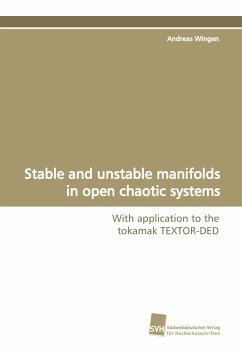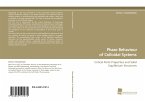On the basis of the Hamiltonian mapping technique, the transport mechanisms of heat and particles in stochastic fusion plasmas are studied. The chaotic motion inside the plasma as well as the wall patterns, created by open chaotic systems like the DED at TEXTOR, are analyzed. For this, the concept of the stable and unstable manifolds is used. Starting with a basic model, the symmetric tokamap as well as the revtokamap, and continued with a simplified realistic model, the cylindrical DED model, the field line transport is analyzed. The typical structures in open, partially stochastic systems and their connections to the stable and unstable manifolds are explained. Then the cylindrical model is generalized to the real toroidal TEXTOR-DED model. The Hamiltonian for a relativistic guiding-center model is derived and a 4-dimensional mapping procedure is constructed. The drift effects are studied for the unperturbed and the perturbed case. Finally, measurements of heat flux patterns atthe divertor plates of the TEXTOR-DED are compared to theoretically calculated ones and their structures are analyzed and explained, using the stable and unstable manifolds.
Bitte wählen Sie Ihr Anliegen aus.
Rechnungen
Retourenschein anfordern
Bestellstatus
Storno








